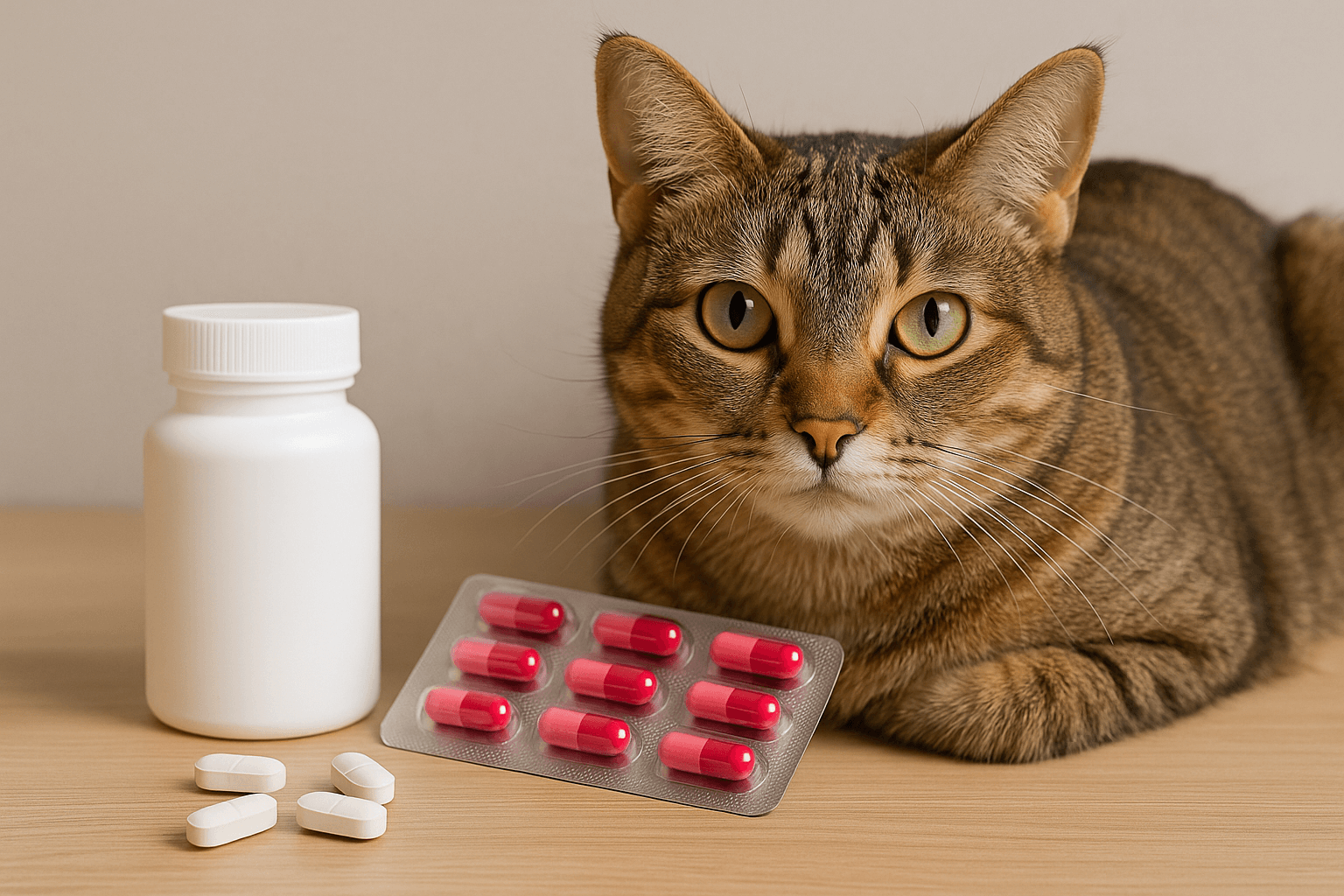Why Is My Cat So Hyper? Decoding the Energy Surge in Your Feline Friend
Cats are known for their graceful demeanor and love of lounging, but what happens when your feline suddenly transforms into a whirlwind of energy? From zoomies across the room to leaping off furniture, hyperactive behavior can leave pet owners scratching their heads. While occasional bursts of energy are normal, excessive hyperactivity might raise concerns about your cat’s well-being. In this article, we’ll explore the reasons behind your cat’s energetic antics, how to manage them, and when it might be time to consult a professional. Understanding your cat’s behavior will not only help you address their needs but also strengthen the bond between you and your furry companion.
Unleashing the Energy: Why Is My Cat So Hyper?
There are several factors that contribute to a cat’s hyperactive behavior. These range from natural instincts to external influences, and recognizing the cause is key to managing it effectively.
Hunting Instincts :
Cats are natural predators, and their bursts of energy often mimic hunting behaviors like stalking and pouncing.Boredom or Lack of Stimulation :
Without enough mental or physical stimulation, cats may channel their excess energy into erratic behavior.Kitten Energy :
Younger cats and kittens are naturally more energetic as they explore and develop their skills.Pent-Up Energy :
Cats that don’t get enough exercise during the day may release stored energy in sudden bursts.Playful Personality :
Some cats are simply more active and playful by nature, making them prone to hyperactivity.
Understanding these triggers can help you determine whether your cat’s behavior is normal or if there’s an underlying issue that needs attention.
When Hyperactivity Becomes a Concern: Recognizing Overstimulation
While occasional hyperactivity is normal, persistent or extreme behavior might indicate overstimulation or stress. Here are some signs that your cat’s energy levels could be a red flag:
Excessive Vocalization :
Frequent meowing or yowling during play sessions may signal frustration or overexcitement.Aggressive Behavior :
Biting or scratching during play can suggest your cat is overwhelmed.Destructive Actions :
Knocking items off shelves or scratching furniture excessively might point to pent-up energy.Restlessness at Night :
Increased activity during nighttime hours can disrupt sleep patterns for both you and your cat.Inability to Settle Down :
If your cat can’t relax even after vigorous play, it could indicate overstimulation.
If you notice these behaviors consistently, it may be time to evaluate your cat’s environment and routine to ensure they’re getting the balance they need.
Check this guide 👉Why Does My Cat Cuddle With Me? Best 7 Behavior Tips!
Check this guide 👉Why Does My Cat Only Like Me? Best 7 Expert Tips!
Check this guide 👉Why Is My Cat Trembling? Best 7 Expert Tips!

Reasons for Hyperactivity | Ways to Manage It |
|---|---|
Hunting instincts | Provide interactive toys that mimic prey |
Boredom or lack of stimulation | Engage in daily play sessions |
Kitten energy | Offer safe spaces for exploration |
Pent-up energy | Schedule regular exercise routines |
Playful personality | Rotate toys to keep them interesting |
Taming the Tornado: How to Help Your Cat Relax
If your cat’s hyperactivity feels overwhelming, there are steps you can take to calm them down and redirect their energy. Here are some strategies to try:
Establish a Routine :
Consistent feeding, play, and sleep schedules can help regulate your cat’s energy levels.Provide Mental Stimulation :
Puzzle feeders and treat-dispensing toys challenge their mind and tire them out.Create a Safe Space :
Designate a quiet area where your cat can retreat when feeling overstimulated.Use Calming Products :
Items like pheromone diffusers or calming sprays can reduce anxiety and promote relaxation.Limit Late-Night Activity :
Tire your cat out before bedtime to minimize nighttime zoomies.
With patience and consistency, these methods can help curb hyperactivity and create a peaceful home environment for everyone.
Fun and Focus: Activities to Keep Your Cat Entertained
Providing outlets for your cat’s energy is essential to preventing hyperactive behavior. Here are some engaging activities that can help burn off excess energy while keeping your cat happy and healthy.
Interactive Toys :
Wand toys, laser pointers, and feather teasers encourage chasing and pouncing.Cat Trees and Climbing Structures :
Vertical spaces allow cats to jump, climb, and explore safely.DIY Obstacle Courses :
Use boxes, tunnels, and furniture to create a fun indoor playground.Scheduled Play Sessions :
Dedicate 10–15 minutes multiple times a day to structured playtime.Hide-and-Seek Games :
Hide treats or toys around the house to stimulate their hunting instincts.
These activities not only tire your cat out but also provide mental enrichment, reducing the likelihood of hyperactive episodes.
Creating a Stimulating Environment: How to Keep Your Cat Engaged
A hyperactive cat often thrives in an environment that provides plenty of stimulation. By enriching their surroundings, you can help channel their energy into productive activities and reduce unwanted behaviors. Here are some ideas to create a more engaging space for your feline friend:
Install Window Perches :
Allow your cat to observe birds, squirrels, or passing cars from a safe vantage point.Add Scratching Posts :
Scratching not only maintains their claws but also serves as a healthy outlet for excess energy.Incorporate Cat-Friendly Plants :
Non-toxic plants like cat grass or catnip can provide sensory stimulation and entertainment.Use Motion-Activated Toys :
Toys that move unpredictably mimic prey and keep your cat entertained even when you’re not home.Create Vertical Spaces :
Shelves, hammocks, or wall-mounted perches encourage climbing and exploration.
By enriching your cat’s environment, you can satisfy their curiosity and reduce hyperactivity caused by boredom or restlessness.
Balancing Energy Levels: Tips for Cats Living Together
In multi-cat households, one hyperactive cat can influence the energy levels of others, sometimes leading to chaos. Managing this dynamic requires thoughtful strategies to ensure harmony and prevent overstimulation. Here’s how to handle hyperactivity in a shared space:
Provide Separate Play Areas :
Designate specific zones for each cat to play and relax, reducing competition for resources.Rotate Play Sessions :
Spend individual time with each cat to address their unique needs and energy levels.Introduce Calming Scents :
Use products like Feliway to promote a sense of calm among all household cats.Monitor Social Dynamics :
Watch for signs of tension or bullying, which can escalate hyperactive behavior.Offer Shared Activities :
Group play sessions with interactive toys can help burn off energy collectively.
By addressing the needs of each cat and fostering a peaceful environment, you can minimize stress and manage hyperactivity effectively.
Growing Up or Growing Old: How Age Affects Energy Levels
A cat’s age plays a significant role in their activity level, and understanding these changes can help you interpret their behavior. Whether they’re a rambunctious kitten or a senior slowing down, here’s how age influences hyperactivity:
Kittens (0–12 months) :
High energy is normal as they explore, learn, and develop coordination.Young Adults (1–6 years) :
Peak physical condition means bursts of energy are common during play.Mature Adults (7–10 years) :
Activity levels may stabilize, but occasional zoomies can still occur.Seniors (11+ years) :
Reduced mobility and energy are typical, though sudden hyperactivity could indicate discomfort.Health Monitoring :
Any drastic change in energy levels at any age warrants a vet visit to rule out underlying issues.
Recognizing how age impacts your cat’s behavior allows you to tailor your approach to their needs. Whether they’re young and spry or wise and mellow, every stage brings its own joys and challenges.
Frequently Asked Questions About Hyper Cats
Is it normal for my cat to have sudden bursts of energy?
Yes, occasional “zoomies” are normal and often a sign of good health.
Why does my cat get hyper at night?
Cats are naturally crepuscular, meaning they’re most active during dawn and dusk.
Can diet affect my cat’s energy levels?
High-quality nutrition tailored to their age and activity level can help maintain balanced energy.
Should I punish my cat for being too hyper?
No, punishment can increase stress; focus on redirecting their energy positively instead.
When should I see a vet about my cat’s hyperactivity?
Consult a vet if the behavior is accompanied by weight loss, aggression, or other unusual symptoms.
Final Thoughts: Embracing Your Cat’s Energy
Having a hyper cat can be challenging, but it’s also a testament to their vitality and zest for life. By understanding the reasons behind their energetic behavior and providing appropriate outlets, you can transform those wild moments into opportunities for bonding and fun. Remember, every cat is unique, and finding the right balance of play, rest, and stimulation is key to keeping them happy and healthy. With patience and creativity, you can turn your little tornado into a content and well-adjusted companion. After all, life with a hyper cat is never dull—and that’s part of the joy they bring to our lives!
Cat Fever Treatment: Best 7 Expert Tips! Discover expert advice on identifying, managing, and treating fever in cats to ensure their quick recovery and well-being.
Understanding Meloxicam for Cats: Best 7 Expert Tips! Learn how to safely administer meloxicam, manage side effects, and ensure your cat's comfort with expert advice on feline pain relief.
Amoxicillin for Cat UTI: Best 7 Expert Tips! Discover safe usage, dosage guidelines, and expert advice on treating feline urinary tract infections effectively with amoxicillin.
Understanding Cat Cancer Treatment: Best 7 Expert Tips! Discover expert advice on managing feline cancer, from early detection to treatment options, ensuring your cat’s health and comfort.





